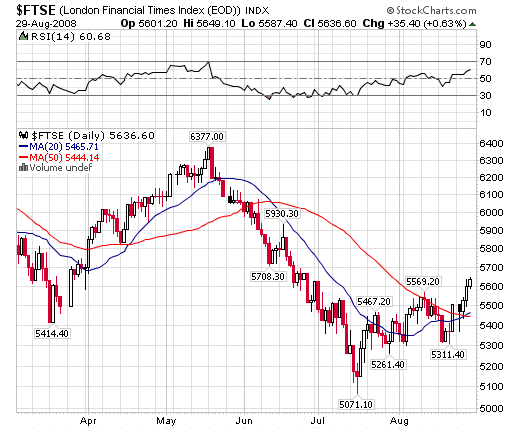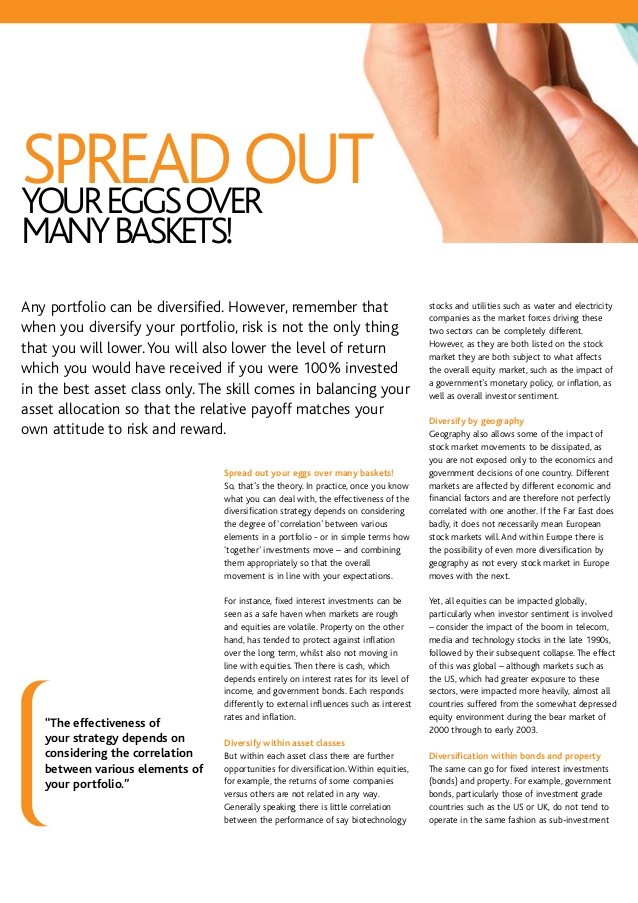Spice up your investment strategy with spread betting
Post on: 16 Март, 2015 No Comment

Being able to profit in rising and falling markets is a key advantage of spread betting and CFDs.
But the characteristics of these trading forms mean they can be used to spice up investment strategies in other ways too.
With the option to go short as well as long, both spread betting and CFDs can be used to hedge long-only exposure in others parts of your portfolio.
If you hold shares there can be times when you think the value might fall but you can’t sell them because you’ll create a capital gains tax liability. When this happens you might want to go short so you cancel out the fall, explains Paul Dimambro, head of HL Markets.
As an example, say you held a large number of shares in the company you worked for. They’d performed fantastically over the last couple of years but you fear the price is going to fall.
As they’d trigger a capital gains tax liability, selling them all isn’t an option. Instead, you decide to take out a spread bet, or CFD, going short. This way, if your prediction is right, although you’ll lose money on the shares, you’ll make money on your short position.
Spread betting and CFDs can be used to hedge other investments too. Say you were looking to buy a holiday home in France later this year and were worried the sterling/euro exchange rate might move against you, you could hedge your exposure with a spread bet or CFD.
Dimambro explains: If the exchange rate is 1.15 and you think it will go to parity you stand to lose 15% of the value of your sterling. By taking out a short position for the value of your future property purchase, you’ll shield yourself from this.
While both approaches are effective, CFDs are often favoured for hedging purposes. David Jones, chief market strategist at IG Index, explains: Although any profits you make from trading CFDs will be liable for capital gains tax, if you get it wrong and you make a loss you can offset this against other gains.
Hedging example
You bought 100,000 of shares in New Company at £1 per share. Over six months they increase by 20% and are worth £120,000. You believe they will fall back to around 110p per share but you don’t want to sell as you will create a capital gains tax liability.
To hedge against this you go short at 120p with a spread bet at £1,000 per point. This is equivalent to share exposure of £120,000, so with a 10% margin, you put down £12,000.
As predicted, the share price falls to 110p so you close your position, buying at 110p and giving you a profit of £10,000.
This means that although you have lost £10,000 on your shares, this has been cancelled out by a tax-free £10,000 profit on your spread bet.
Pairs trading
Another strategy that can be used with spread betting and CFDs is pairs trading. With this you look to buy an undersold asset and sell an overbought one. Ideally, you would make a profit on both positions but even if the market is rising, you will still profit as the undersold asset should increase by a greater percentage than its overbought peer.
Although you can pick any pair you like, pairs are often plucked from the same sector. A good example of this is the banking sector.
You might decide that Barclays (BARC) has performed well and there’s little potential left in its share price, while RBS (RBS) is undervalued so you go short on Barclays and long on RBS. If your view is correct, and Barclays falls while RBS rises, you’ll make a profit from both of your positions.
This is a fairly risk-averse strategy, explains Mike McCudden, head of retail derivatives at Interactive Investor.
Ideally, both of your positions will make money, but even if the market moves up the undersold share should increase more than the overbought one and vice versa if the market falls. It’s just a question of identifying pairs of shares that will behave in this way.
Pairs trading example
You believe BP (BP.) is undervalued compared to Royal Dutch Shell (RDSB). To support this view, you buy BP at 440p at £10 a point and sell Shell at 2100p at £2 a point to give you similar exposure (£4,400 in BP and £4,200 in Shell).
Both of your positions are correct, with BP rising to 444p and Shell rising to 2101p. This means you make £40 on BP and £2 on Shell — a total profit of £42.
If, however, both increase in value, rising to 446p and 2105p respectively, when you closed your positions, you would make a profit of £60 on BP but realise a loss of £10 on Shell. Overall though, you would still be £50 up on the trade.
Event-driven trading
The ability to leverage with spread betting and CFDs means you can use them to magnify a return when there are spikes in a market.
You can get violent price movements as the result of events such as the release of economic data or an interest rate decision, explains Joshua Raymond, market strategist at City Index.
As well as events such as company results and the monthly interest rate decision, Raymond says the US non-farm payroll is also closely watched by event-driven traders. Released on the first Friday of every month, this is a statistic compiled by the US Bureau of Labour Statistics that serves as a health check for the US economy.
But, although these events can produce the sort of volatility that feeds through to big returns on spread betting and CFDs, Raymond warns that this approach can be high risk.

Markets can move a lot, resulting in large losses as well as gains. You also have to be quick if you’re looking to trade on an unexpected event such as the Japanese tsunami as movement can happen within 15 to 20 minutes, he adds.
Risk/reward ratio
Using limit orders can also enhance the way you play the markets. Simple stop losses — whereby you place an order with a broker to sell a security when it reaches a certain price — will free you from watching prices all day, but you can also use limit orders to take some of the emotion out of trading.
When you’re trading it’s very easy to take your profits too quickly and let your losses get out of hand. Putting in orders will prevent this, says Jones.
A common way to do this is to decide on a risk/reward ratio. Although you can set the ratio at other levels, McCudden suggests a rate of three losses to one win. So, for example, you might put in limit orders to take profits if the price increased by 30 points and cut the losses if it fell by 10 points.
If you do this, it removes the temptation to take profits too early or leave your losses to run. And, as long as you call it right, more than a third of the time you will make money, he adds.
Which markets to play?
Spread betting and CFDs give you access to thousands of different financial instruments, from UK shares and world indices to commodities and currencies. And some markets are much more popular than others.
According to David Jones, chief market strategist at IG Index, the most popular are individual shares and indices. People using spread bets and CFDs have usually come from a traditional share-dealing background so they’re used to the way shares perform.
Currencies are also popular. Paul Dimambro, head of HL Markets, says that currency pairs, including UK sterling, US dollar, euro, and the Japanese yen are particularly popular with UK traders.
But, although sticking to the knitting is sensible when you have more than your initial outlay at stake, the experts believe investors are overlooking some interesting, and potentially lucrative, markets.
One of these is gilts, a market which has recently shown some massive fluctuations. This would make gilts a good investment opportunity for spread betting and CFDs but people aren’t really used to trading them, says Dimambro.
He also believes soft commodities such as wheat, pork bellies and coffee have been unfairly ignored. Prices of these move around a lot and, with food prices rising, it’s definitely an interesting market for investors using spread betting and CFDs, he adds.
Note: examples are for illustrative purposes only and do not take into account spreads, commissions or financing charges.
This article is for information and discussion purposes only and does not form a recommendation to invest or otherwise. The value of an investment may fall. The investments referred to in this article may not be suitable for all investors, and if in doubt, an investor should seek advice from a qualified investment adviser.














